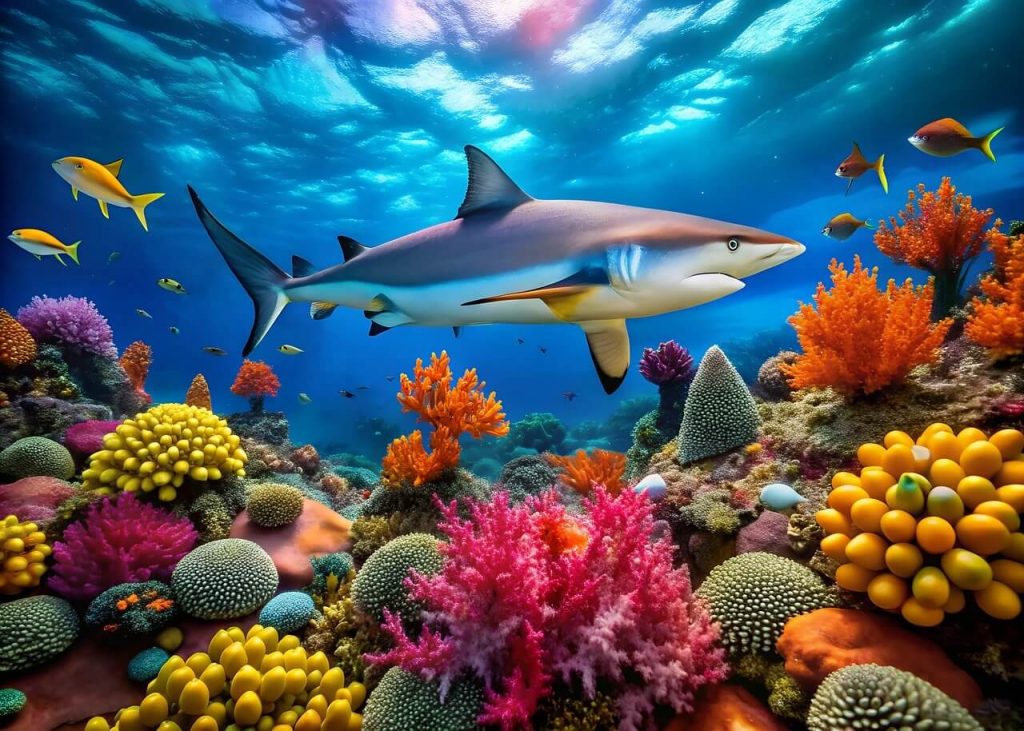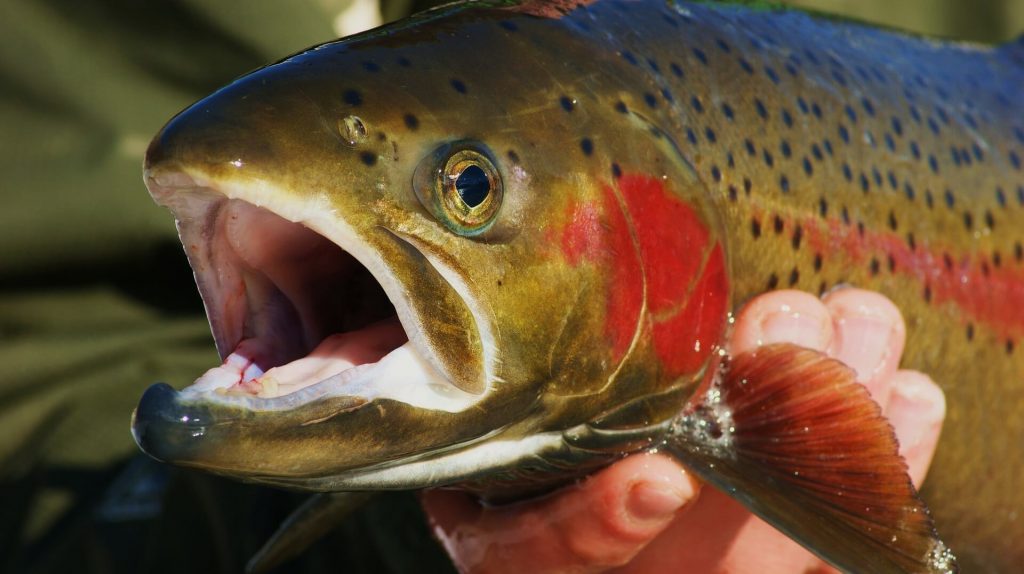Contents
- 1. Stonefish (Synanceia spp.)
- 2. Pufferfish (Tetraodontidae family)
- 3. Scorpaenidae (Scorpionfish)
- 4. Bull Shark (Carcharhinus leucas)
- 5. Great Barracuda (Sphyraena barracuda)
- 6. Lionfish (Pterois spp.)
- 7. Electric Eel (Electrophorus electricus)
- 8. Hammerhead Shark (Sphyrna spp.)
- 9. Mantis Shrimp (Stomatopoda)
- 10. The Coelacanth (Latimeria chalumnae)
The underwater world is home to a diverse array of marine life, with some species showcasing astonishing beauty while others possess a lethal edge. Fish, which make up a significant portion of the aquatic ecosystem, can be tranquil denizens of the coral reefs or fearsome predators in the open ocean. Here, we highlight the top ten most dangerous fish that pose risks to humans and other marine life, driven either by their venom, powerful attacks, or aggressive behaviors.
1. Stonefish (Synanceia spp.)
Overview: The stonefish, often deemed the most venomous fish in the world, is adept at camouflage, resembling jagged rocks or coral. Found in the coastal waters of the Indo-Pacific region, they lay still and wait for prey to pass by.
Danger: The stonefish has venomous spines on its back that can deliver a toxic sting severe enough to paralyze prey and cause excruciating pain in humans. Death can occur if the sting is not treated promptly.
2. Pufferfish (Tetraodontidae family)
Overview: Renowned for their ability to puff up as a defense mechanism, pufferfish are visually stunning, with their vibrant colors and unique body shape. They inhabit warm waters, particularly in the tropics.
Danger: Pufferfish contain tetrodotoxin, a potent neurotoxin found mainly in their organs. This toxin makes them potentially lethal if consumed, as there is no known antidote. In Japan, preparation of pufferfish (known as fugu) is a culinary art that requires a licensed chef due to its dangers.
3. Scorpaenidae (Scorpionfish)
Overview: Scorpionfish, characterized by their camouflaged appearance blending seamlessly with rocky reefs, are distributed throughout the world’s warm waters. They are known for their impressive camouflage and formidable appearance.
Danger: The venomous spines along their dorsal fins can cause intense pain and swelling in humans. While fatalities are rare, stings can be severe and require medical attention.
4. Bull Shark (Carcharhinus leucas)
Overview: A highly adaptable predator, the bull shark can thrive in both salt and freshwater, often venturing into rivers and estuaries. They are found in tropical and subtropical waters worldwide.
Danger: With their stocky build and aggressive nature, bull sharks are responsible for a significant number of attacks on humans. Their ability to swim in shallow waters near populated areas makes encounters more likely.
5. Great Barracuda (Sphyraena barracuda)
Overview: Known for their elongated bodies and razor-sharp teeth, great barracudas inhabit warm and tropical waters, especially around coral reefs. They are swift hunters and are often seen solo.
Danger: Great barracudas can be aggressive, especially when they feel threatened. While they typically avoid humans, they have been known to attack, particularly if something shiny is misidentified as prey.
6. Lionfish (Pterois spp.)
Overview: Adorned with striking stripes and long, venomous spines, lionfish are native to the Indo-Pacific but have become invasive in the Atlantic and Caribbean regions.
Danger: While lionfish are not aggressive towards humans, their venomous spines can cause painful stings. Moreover, their invasive nature threatens local fish populations, which can lead to ecosystem imbalances.
7. Electric Eel (Electrophorus electricus)
Overview: Despite its name, the electric eel is actually a knifefish and is native to the waters of the Amazon and Orinoco basins in South America.
Danger: Electric eels can generate powerful electric shocks of up to 600 volts, which they use for hunting and self-defense. While a shock is usually not fatal to humans, it can cause muscle spasms, disorientation, and even drown a person if the shock occurs in water.
8. Hammerhead Shark (Sphyrna spp.)
Overview: With their distinctive hammer-shaped heads, hammerhead sharks are a unique species often found in schools near the ocean’s surface in warm waters.
Danger: While hammerhead sharks are generally considered less aggressive than other shark species, their size and strength can still pose a risk. Attacks are rare but do occur, particularly when they feel threatened or are provoked.
9. Mantis Shrimp (Stomatopoda)
Overview: While not technically a fish, the mantis shrimp deserves mention due to its incredible speed and strength. Hailing from tropical and subtropical waters, these crustaceans boast one of the most powerful punches in the animal kingdom.
Danger: Mantis shrimp can strike with the speed of a bullet, delivering a blow capable of breaking through aquarium glass. Their blows can injure divers and fishermen, making them dangerous despite their small size.
10. The Coelacanth (Latimeria chalumnae)
Overview: This ancient fish was believed to be extinct until its rediscovery in 1938 off the coast of Africa. Coelacanths are deep-sea dwellers known for their distinctive lobed pectoral fins.
Danger: The coelacanth itself is not a direct threat to humans, but its rarity and size (growing up to 6.5 feet) can be dangerous when encountered in deep waters. Additionally, their historical significance and conservation status draw attention to the delicate balance of marine ecosystems.
The oceans are full of surprises, and while many fish display striking colors and unique features, others possess dangerous attributes that serve as a reminder of nature’s unpredictability. Understanding these top ten dangerous fish can help individuals appreciate the beauty and peril of marine life while promoting awareness and respect for the underwater world. Whether you’re a diver, a fisherman, or simply an ocean enthusiast, knowledge is your best defense against dangerous encounters beneath the waves. Always exercise caution and respect the creatures that inhabit our oceans, and remember that in their domain, we are often the visitors.




